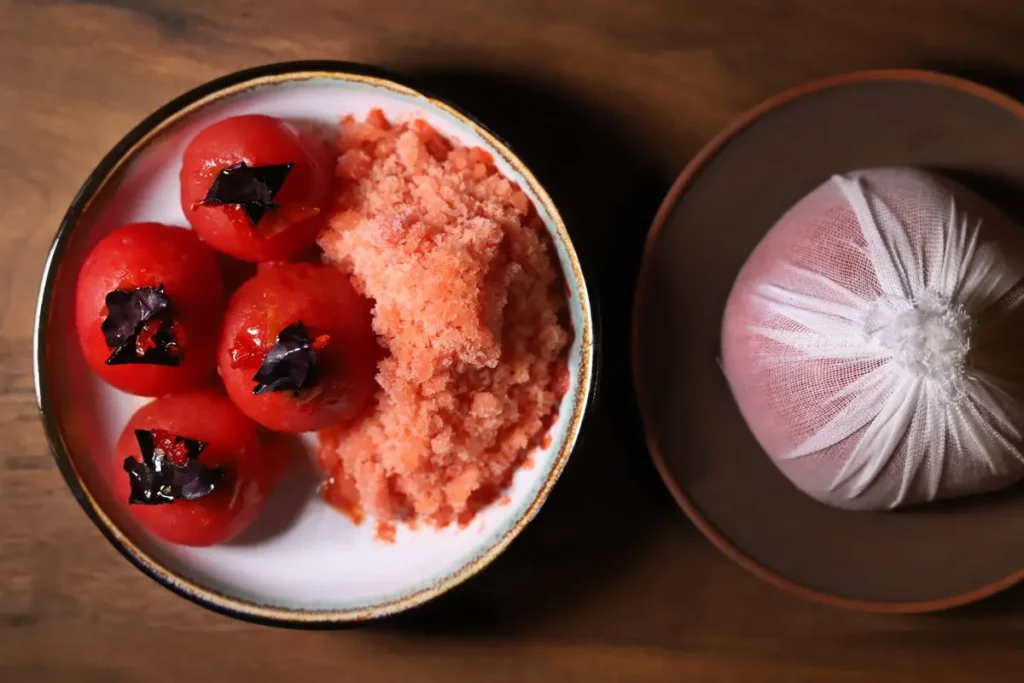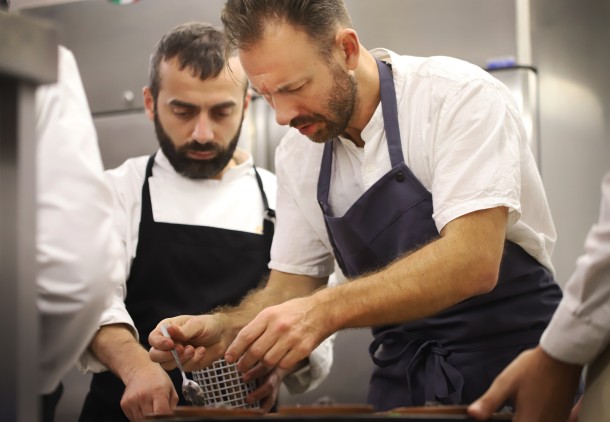Soviet and underground buildings showcase Armenia’s unique culinary history

Women bake lavash flatbread the traditional way at the Tsaghkunk Restaurant and Glkhatun in the Armenian village of Tsaghkunk. (All photos by Veidehi Gite)
VEIDEHI GITE, Contributing writer
TSAGHKUNK, Armenia — Nestled in the Caucasus Mountains, Armenia promises an escape into a world untouched by time.
My adventure began in Yerevan, the capital, which rises like a phoenix from the volcanic plains. At its heart lies a unique architectural legacy, with buildings that glow with a honeyed hue, etched in tuff — a rock composed of consolidated volcanic ash from the Armenian Highlands. This unique stone has been used to build everything from agricultural structures to religious buildings and castles. Beyond the architecture, the ethereal beauty of Lake Sevan offers a serene counterpoint to the rugged mountains that encircle it.
As I ventured deeper into the country, I found myself transported to ancient monasteries that clung precariously to cliffs, their stone walls etched with the stories of centuries past. Armenia was the world’s first nation to embrace Christianity, around 300 A.D., and intricate khachkar cross-stones, masterpieces of Armenian artistry, stand sentinel all over the country.
But Armenia is more than a museum piece. Over a glass of Zulal Areni, an Armenian red wine, I discovered a rich gastronomic culture brimming with unique offerings in Tsaghkunk, a village nestled in Armenia’s Sevan municipality whose name means “blossoming” and whose history spans more than two millennia.
Picture a dusty road snaking through rolling fields of thyme and barley, glinting gold in the sun, dotted with blue cornflowers and interrupted only by a few squat houses, their slanting roofs a distinctive feature. Standing watch is the imposing seventh-century St. Sargis church, built in black basalt, which dominates the skyline. Huddled nearby lay a cluster of intricately carved khachkars dating to the 13th century.
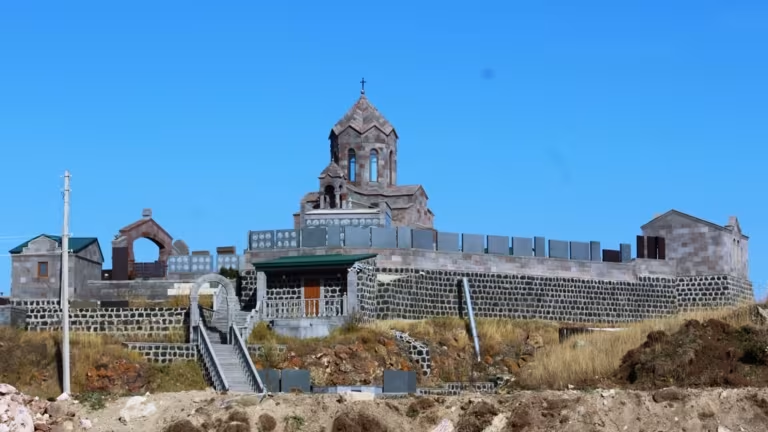
Constructed of black basalt, the imposing St. Sargis church in Tsaghkunk dates back to the seventh century.
Tucked away at the base of the Pambak Mountains, an hour’s drive from Yerevan and about 15 minutes from Lake Sevan, Tsaghkunk’s history peeks through in unexpected corners. A poignant memorial complex stands as a solemn tribute to villagers who lost their lives during World War II, and a Wheel of History wall tells the story of the war’s impact. As I climbed the steps to the memorial, the head of a majestic eagle came into view, its wings formed by the landscape — the outlines of the Khachi Dosh and Sev Arot hills.
In the bustling village, said to date to the sixth-century B.C., a squat, Soviet-era canteen is now a sought-after local eatery — and it is the unique culinary experience offered by the Tsaghkunk Restaurant and Glkhatun here and in a nearby traditional building that attracts tourists willing to make the trek for a taste of the country’s underground heritage.
The Soviet building sat abandoned for 40 years until 2020, when Hrachya Aghajanyan, a businessman and former diplomat, lovingly restored it as a dining room and community center. Driven by a profound appreciation for Armenian heritage, the Aghajanyan family also discovered and restored an abandoned glkhatun — a traditional house with a wooden frame and earth roof, also known as a cave dwelling.
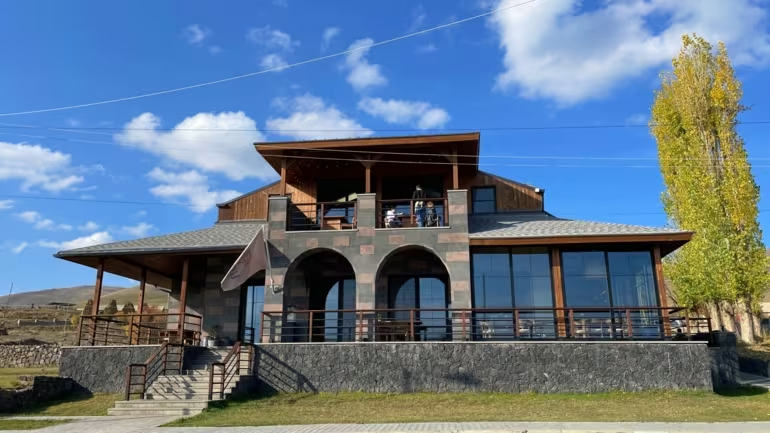
Tourists can get a taste of the country’s culinary heritage at the Tsaghkunk Restaurant and Glkhatun — a Soviet-era canteen that is now a popular eatery.
The excavation of the site led to the discovery of 300 artifacts dating back to the 11th century, paving the way for it to become the premier gastronomic and ethnographic center of the region. “The moment soil rained down on my head, I knew this wasn’t any ordinary shack,” Aghajanyan said of his dusty initial encounter with the glkhatun.
Thankfully, I reacted fast,” he adds, “because the whole place could have collapsed.” Aghajanyan’s swift reflexes also prevented damage to two 11th-century tonirs(underground stone and clay ovens) in an adjoining building that was also once a glkhatun.
Visitors to the underground restaurant created in these restored traditional buildings eat in spacious rectangular rooms carved deep into the hillside, with hard earthen floors bordered by retaining walls composed of volcanic rock. The effect resembles the megarons in ancient Greek palace houses, with minimal openings including a door and a yerdik — a smoke hole above the hearth. Glkhatuns are also renowned for their hazarashen — complex wooden roofs that are considered an early prototype for the domes of some Christian churches.
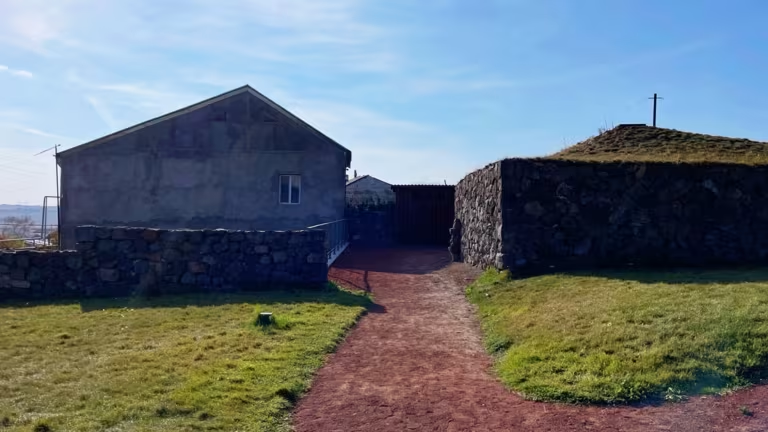
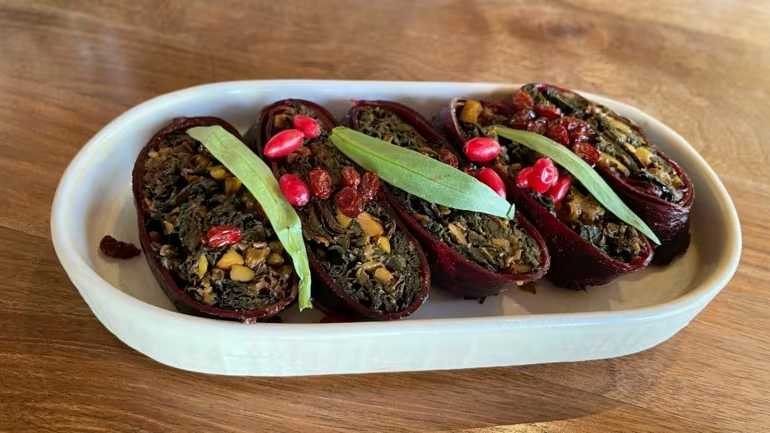
Top: The entrance to a glkhatun — a traditional house with a wooden frame and earth roof. Bottom: Fruit lavash with walnuts.
But tradition is not just on display — it is on the menu. While the two excavated tonirs have been encased in glass and preserved as historical attractions, a new tonir (also known as a tandoor) has been dug to demonstrate traditional underground cooking. This includes baking lavash (a paper-thin ancient flatbread) and preparing dishes such as panrakhash (featuring bread, cheese and sauteed onions) and gata (Armenian pastry), which are deeply rooted in Armenian culinary heritage.
Witnessing the lavash baking firsthand was a revelation. The family’s meticulous process began with prepping the clay oven. For nearly two hours, they burned wood, coaxing the oven to the perfect temperature. Dim flames danced on the ancient stone walls, casting a warm glow that banished the chill of the evening. Soon after, the once-roaring fire mellowed into a bed of incandescent embers, radiating a steady heat.
Anna Yesayant, one of the bakers, retrieved a lump of dough with a practiced flick of her wrist. Her hands danced, swiftly stretching and coaxing it into a translucent sheet, impossibly thin and seemingly defying gravity. With the dough stretched before her, Gohar Gareginyan, another baker, dipped her hand in water and deftly traced a delicate cross onto its surface. “It’s a blessing,” Gareginyan explained, “a touch of divine grace bestowed upon this ordinary bread transforms it from sustenance to insignia of faith.”
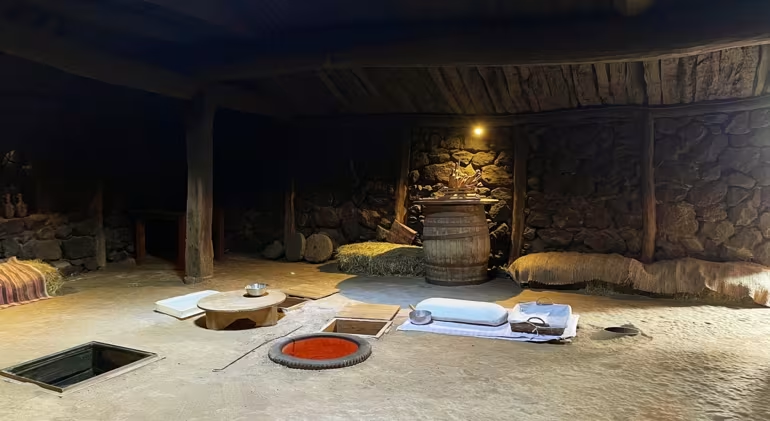
A lavash baking unit in a glkhatun — a traditional house with a wooden frame and earth roof, also known as a cave dwelling.
The aroma of freshly baked lavash filled the air, leading to a feast of the restaurant’s signature dishes: crispy fried chechil cheese, sour sorrel with walnuts wrapped in fruit lavash, boneless chicken stuffed with bulgur wheat, nuts and dried fruits, pork ribs with village potatoes, and homemade yoghurt with fruit sauce.
“Our dairy products differ from those made elsewhere,” said chef Arevik Martirosyan. “We produce choratan, a homemade heavy cream, alongside yoghurt, strained yoghurt, an assortment of Armenian cheeses, sour cream, and cottage cheese — all crafted in our village.”
Martirosyan also emphasizes the importance of local ingredients: “I greatly value Armenian fish, crayfish, and our fruits, berries, and vegetables, which are renowned for their sweetness, flavor and aroma.” The kitchen team also forages in the surrounding hills for wild greens known as shushan, sibekh, mandak, khjnjloz, chanjhapashar and sindj.

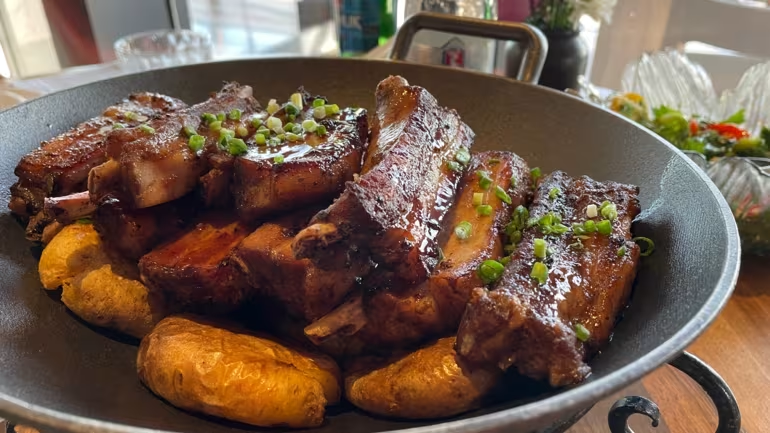
Top left: Sour sorrel. Top right: Homemade yoghurt with fruit sauce. Bottom: Pork ribs with village potatoes.
For Aghajanyan, Tsaghkunk is a connection to his roots. “Spreading the taste of tonir cooking is important to me,” he said, drawing a parallel between the circular nature of the tonir’s shape and the enduring pull of tradition. “While you can explore the world, you’ll ultimately return to the place you originate from. It brings the circle of life to completion.”
What to see when you’re there:
For visitors who want to immerse themselves in local culture, the Tsaghkunk Chef House and the Sargsyan Eco House offer comfortable accommodations within five minutes’ walk of Tsaghkunk Restaurant and Glkhatun.
Visitors can also stay in Yerevan, where some of the best hotels are close to Republic Square — including the Armenia Marriott Hotel Yerevan, the Hotel Alexander Luxury Collection, the Double Tree by Hilton and Seven Visions Hotels. The Alexander is celebrated as the first luxury international hotel to open in Yerevan’s historic center. Guest rooms and suites boast a minimalist design enhanced with gold accents and subtle Armenian motifs.
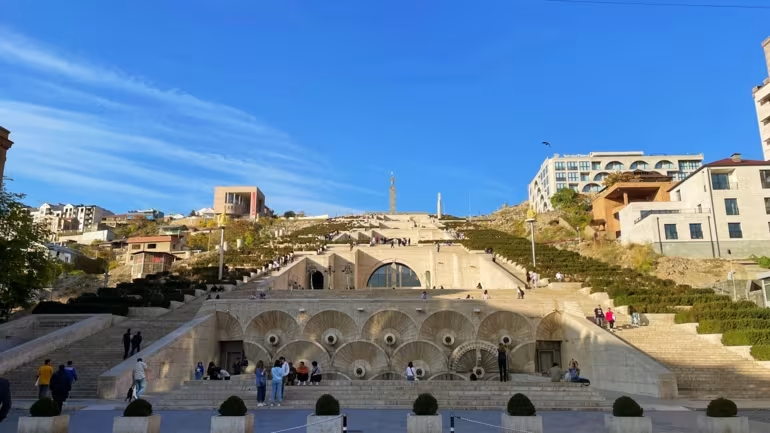
The Cascade Complex in Yerevan is a massive stairway with modern art installations and stunning city views.
Armenia is a destination that invites visitors to slow down, savor the moment and lose themselves in the magic of an ancient land. There are also numerous historical attractions within an hour’s drive of Tsaghkunk that should be on the must-visit list for anyone exploring Armenia, including:
In Yerevan, the cathedral of Saint Gregory the Illuminator, the Grand Mosque, the History Museum of Armenia, the Ararat Brandy Museum, and the Cascade Complex — a massive stairway with modern art installations and stunning city views.
Sevanavank Monastery, on the shores of Lake Sevan, known for its historic khachkars.
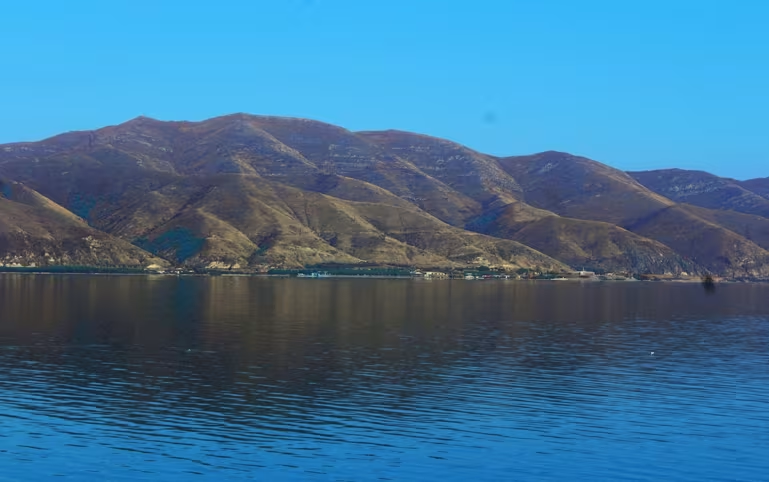
Lake Sevan.
Dilijan, known locally as the Little Switzerland of Armenia, which features spa resorts, a national park and traditional craft workshops.
Hagharstin Monastery Complex, a UNESCO World Heritage Site, which boasts medieval cave churches and intricate carvings.
The Armenia Wine Company, in Sasunik, near Tsaghkunk, which offers wine tastings and a visit to Armenia’s first wine museum.
Nearby parks include the Sevan National Park, Arevik National Park and the Lake Arpi National Park.

